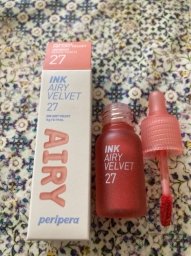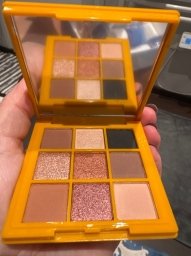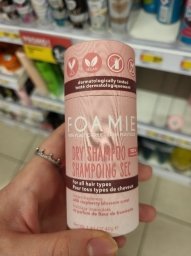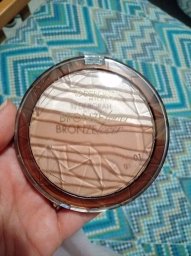 "Strong penalty" in the following categories :
"Strong penalty" in the following categories :
 "Low penalty" in all other categories.
"Low penalty" in all other categories.
- Origin(s): Mineral
- Other languages: Mastenec, Talco, Talek, Talk, Talkum, Талк, טַלק, التلك, タルク, 활석
- INCI name: TALC
- EINECS/ELINCS number: 238-877-9
- Food additive: E553b
- Classification: Regulated
- Organic-compatible (COSMOS Reference)
Namely
Talc is a mineral powder widely used in blushes, foundation powders and even eye shadows. It is also used on the skin as a moisture absorber, hence its use on baby's bottom. In a cream or balm, it also helps reduce the feeling of oiliness.
Several controversies exist about it:
- in 2012, ANSES indicated that it was not possible to exclude the presence of asbestos fibers in certain Talc deposits.
- some studies have also demonstrated irritation in children by inhalation
In 2016, Johnson & Johnson was ordered to pay $72 million to a family whose wife died of ovarian cancer and who had used talcum powder daily for 35 years on her genitals: The court n therefore not excluding that his cancer is due to this use. Since then, other trials have taken place.
In July 2018, Johnson & Johnson was ordered to pay $4.69 billion in damages. 22 women and their families accused the brand that their wipes, composed of talc, had caused the ovarian cancers to which they suffered.
During a recent study from December 2018 in Canada, scientists warned of the risks linked to inhalation and contact of Talc with the female genitals.
For these reasons, and to the extent that it is possible to do otherwise, we have therefore decided to place this ingredient in red, if it is used in intimate hygiene products.
Several controversies exist about it:
- in 2012, ANSES indicated that it was not possible to exclude the presence of asbestos fibers in certain Talc deposits.
- some studies have also demonstrated irritation in children by inhalation
In 2016, Johnson & Johnson was ordered to pay $72 million to a family whose wife died of ovarian cancer and who had used talcum powder daily for 35 years on her genitals: The court n therefore not excluding that his cancer is due to this use. Since then, other trials have taken place.
In July 2018, Johnson & Johnson was ordered to pay $4.69 billion in damages. 22 women and their families accused the brand that their wipes, composed of talc, had caused the ovarian cancers to which they suffered.
During a recent study from December 2018 in Canada, scientists warned of the risks linked to inhalation and contact of Talc with the female genitals.
For these reasons, and to the extent that it is possible to do otherwise, we have therefore decided to place this ingredient in red, if it is used in intimate hygiene products.
Restriction in Europe:
III/59
Wording of conditions of use and warnings for powdered products for children under 3 years:
Keep away from the nose and mouth of the child
Wording of conditions of use and warnings for powdered products for children under 3 years:
Keep away from the nose and mouth of the child
Its functions (INCI)
- Abrasive : Removes materials from the surface of the body, helps clean teeth and improves shine.
- Absorbent : Absorbs water (or oil) in dissolved or fine form
- Anticaking : Helps ensure the fluidity of solid particles and limit their agglomeration in powder cosmetic products or hard mass cosmetics.
- Bulking : Reduces apparent cosmetics density.
- Opacifying : Reduces transparency or translucency of cosmetics
- Skin protecting : Helps to avoid the harmful effects of external factors on the skin
- Slip modifier : Enhance the flow properties of other ingredients. Slip modifiers do not react chemically with the material(s) to which they are added.
This ingredient is present in 4.62% of cosmetics.
Products that contains it












